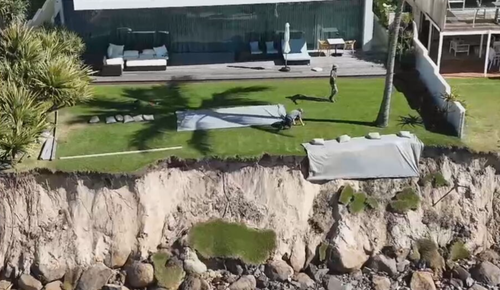Share this @internewscast.com
But as fast as sand is pumped onto the shore, high tides and strong swells wash it away again.
The owners of multimillion-dollar properties at Main Beach are desperately trying to save what is left of their backyards.

“The three pillars of sand, sea walls and dune vegetation isn’t really cutting it because climate change is increasing, sea levels are rising, storm surges are increasing, all these factors are combining to make this problem worse,” Mark Ellis, a coastal erosion researcher from Bond University, said.
“Whether this is Main Beach, Wamberal, Collaroy, or Western Australia or New Zealand, this is happening across the world.
“I understand people want to maintain their assets… but how much is the ratepayer going to put into maintaining those private assets?
“In the long term, some of those houses might need to be removed or pushed back, you know, maybe create more of a green strip.
”This is the big discussion that we need to have, because sooner or later, you can build the wall higher, but the sea is going to keep on rising.”
He said the Gold Coast City Council’s Coastal Adaptation Plan, which sets out how the city will manage and mitigate coastal hazards up to 2100, may need to be significantly fast-tracked.
“Short term we need to be protecting what’s there, but long term looking to how we reduce the vulnerability of the coastal strip because cyclones, as we know, are getting stronger, waves are getting more intense… we just can’t keep up… the council has ssen that it can’t keep up with the sand nourishment.
“We need to change the way we think about coastal property, because everyone loves to live at the beach and we don’t begrudge them living there but society needs to be looking at how we can move forward in the future with the climate impact.”














